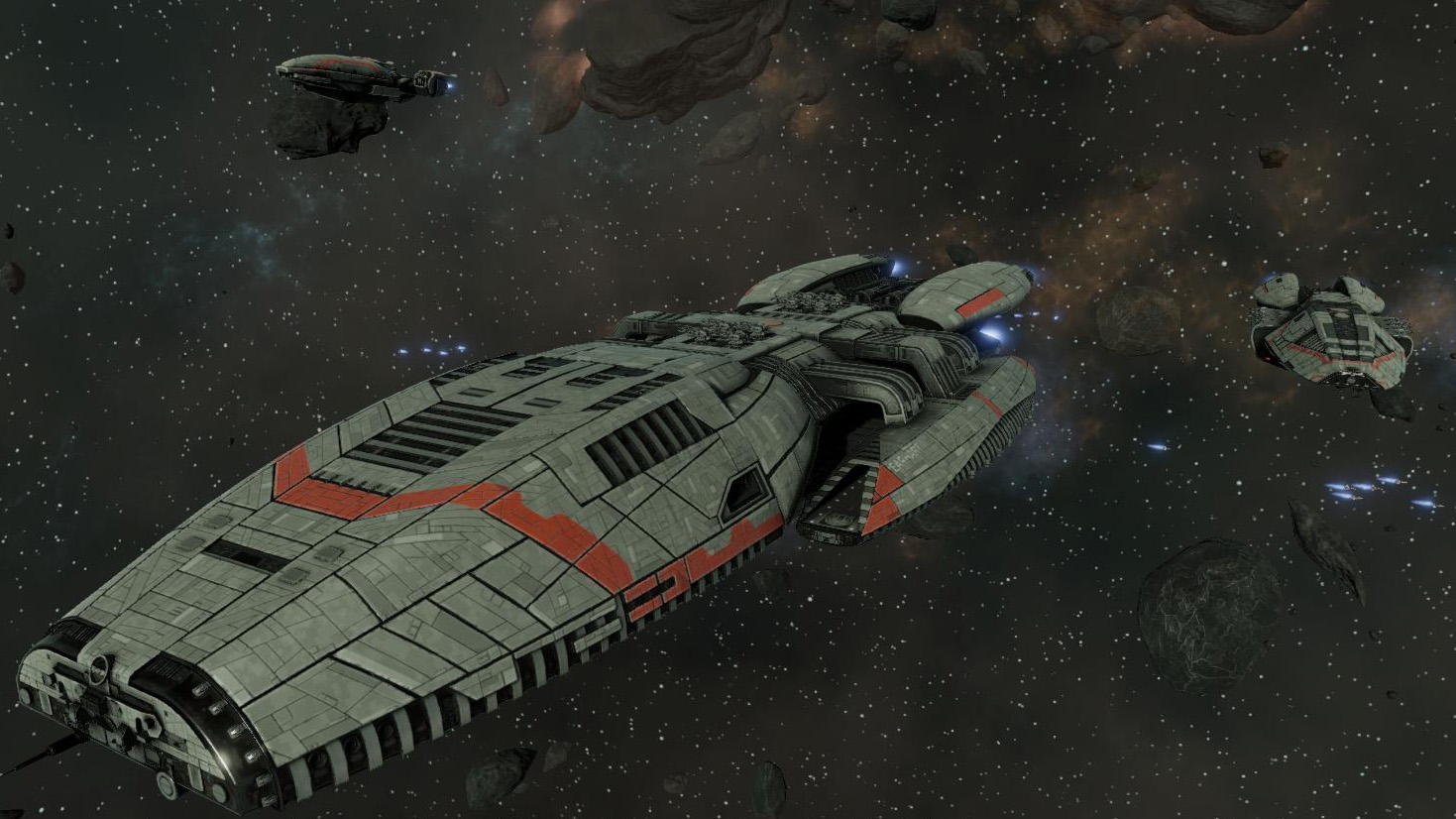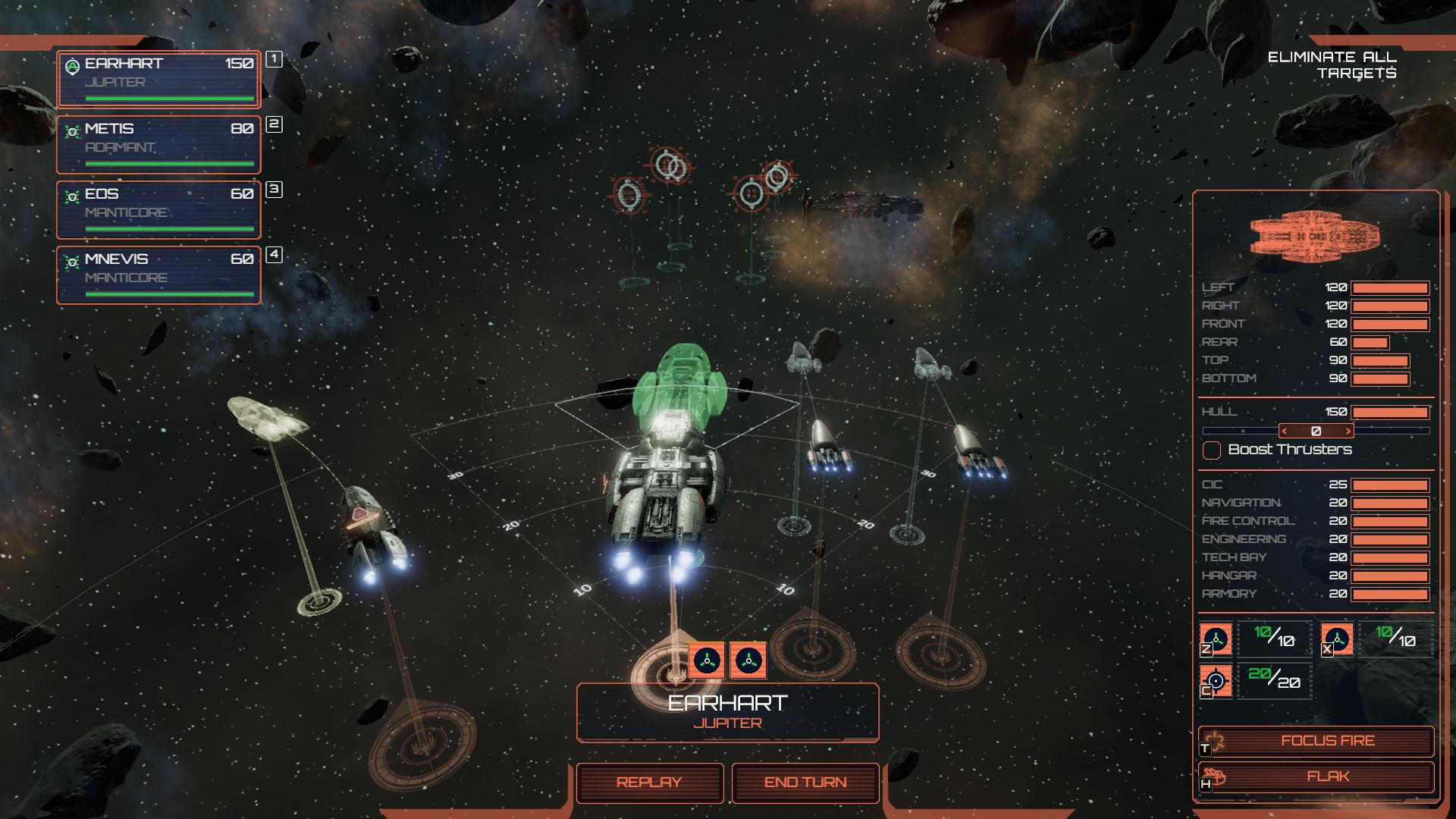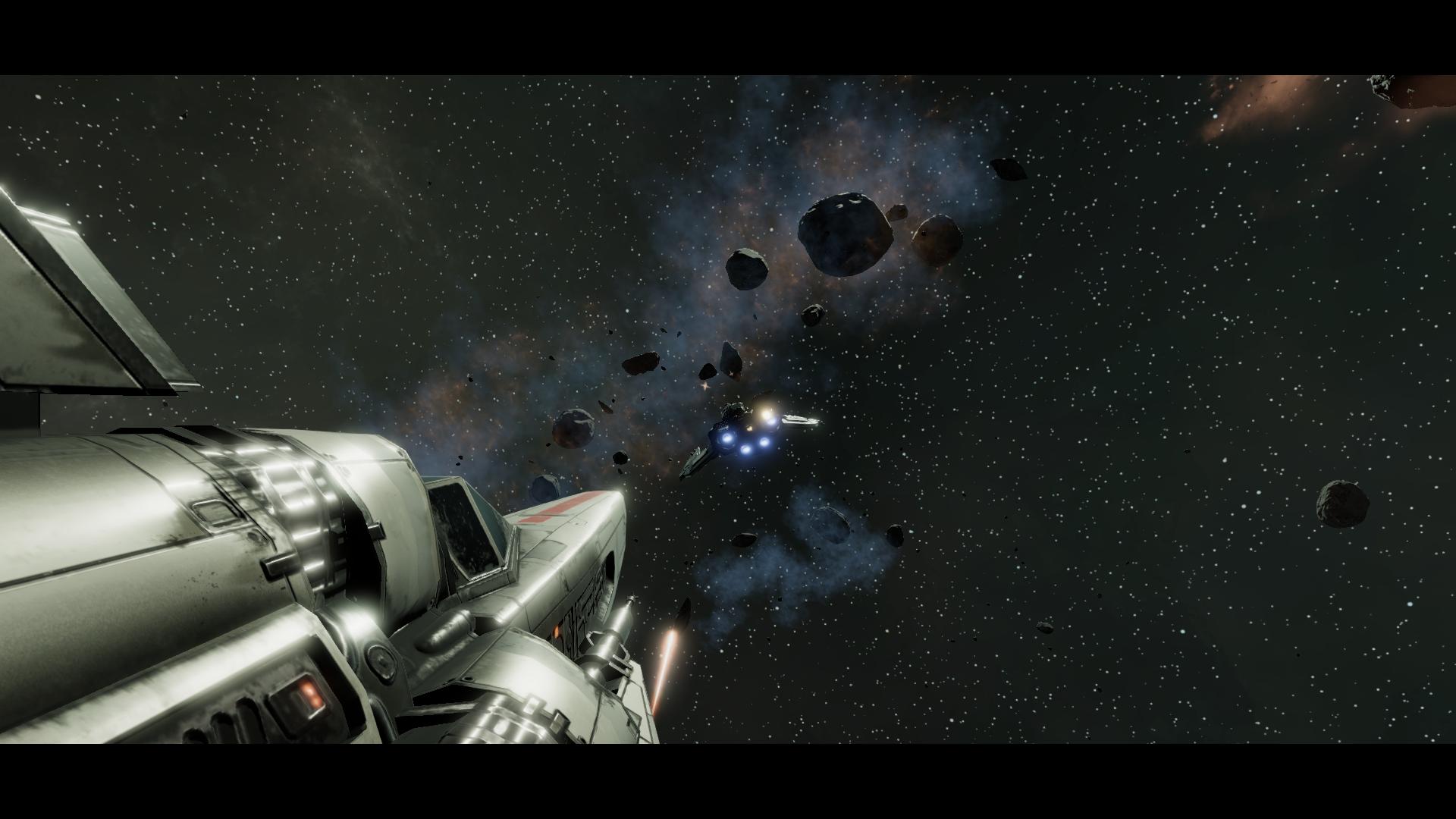
The moment I let all of humanity down is frozen in time. A barrage of missiles that would spell doom for the Daidalos Shipyard, which anchored my fleet, hangs against the black of space. One of my Adamant light carriers is in the process of exploding spectacularly from a barrage moments earlier. Aboard my Battlestar, several subsystems are red and I give a frantic order to engineering to get fire control back online so we can launch missiles at the oncoming wave of the Cylon offensive. Nearby, a scrappy Manticore has been hacked by one of the toasters’ tech frigates and is utterly powerless to help.
It’s in moments like these that Battlestar Galactica: Deadlock really captures the feeling of shit constantly hitting every single fan, which defined the first two seasons of the 2004 television show. Humanity’s outlook almost always feels bleak. There is no such thing as getting out of a fight clean. Something is constantly on fire, and Saggitaron is perpetually threatening to withdraw their financial support for the colonial military because you can’t be in twelve places at once and someone needed to be sacrificed to keep the war going.
Deadlock is set during the First Cylon War, when humanity’s cybernetic servants originally rose up against the 12 Colonies of Kobol roughly 40 years before the events of the show. In Battlestar canon, the humans won that first round and the Cylons disappeared for decades so they could make themselves look like Tricia Helfer and infiltrate Colonial society to get their revenge. From the first turn of the campaign, however, it was clear that this wouldn’t be an assured outcome with me in the admiral’s chair.

The Cylons press the attack everywhere, seemingly always having numbers on their side, and your fleet either has to wait a set amount of time between faster-than-light jumps to new crisis areas, or pay a fee in Tylium, the main resource, to speed things along—at the cost of not being able to build as many ships.
Even when I became financially stable enough to run multiple fleets at once, I never felt like I had enough forces to put out every fire. And letting the Cylons have their way with any of the major colonies decreases their financial support, similar to the council mechanics in XCOM, exacerbating the problem further. It’s hair-pullingly hectic, forcing you to make interesting decisions about what to defend when, as Frederick the Great said, “He who defends everything, defends nothing.”
The battles themselves carry a similarly beleaguering mood. They play out in a turn based/real-time hybrid in which you issue movement and targeting orders while the action is paused, then hit go and watch them play out for a few seconds before everything pauses and starts over again. You have to take into account everything from ship speed and turning radius to weapon firing arcs while managing limited resources like missile salvos and Viper fighter craft squadrons. Attacks deplete armor that is fully locational—including top and bottom, since ships can move freely in all three dimensions. If you take a hit on a side where there is no armor remaining, it will begin to damage your hull points as well as subsystems like navigation and engineering. These can be repaired, but only slowly and one at a time.

It’s important to get the hang of turning the armor-depleted side of a ship away from enemy fire to give repair crews time to work, and to focus-fire specific areas of a ship when on the offensive. All the while, you’ll be trying to anticipate your enemy’s next moves so you can set up good positioning and facing for the upcoming turn. Further depth is added by electronic warfare (certain Cylon ships can disable an enemy quickly by hacking their systems, and each ship has a Firewall stat to defend against this) and the ability of larger vessels to deploy flak to intercept missiles.
The biggest gaming news, reviews and hardware deals
Keep up to date with the most important stories and the best deals, as picked by the PC Gamer team.
Unfortunately, the interface often contributes negatively to the feeling of being beset on all sides. The camera controls are fairly clumsy. Selecting targets for missiles and fighters isn’t especially intuitive. Even jumping between locations on the campaign map is fiddlier than it needs to be, and misses some fairly basic functionality like being able to select a fleet and right-click where you want it to go. Instead, you have to select the fleet, press “Jump” in the fleet interface, click on the destination, then click again to confirm—a process that could be accomplished with half as many actions.

I also found that the status bars did a poor job of telling me what status my ships were in. There’s a bar that represents overall health, but not icon indicating when specific systems are offline or notification when repairs are complete. This leads to a fair bit of manual babysitting that I needed to remember to do for each ship on each turn.
There wasn’t a single engagement in Deadlock that didn’t put me on edge. Each scrap I was lucky enough to emerge from in one piece left me battered, bruised, and usually having lost expensive ships I’d spent my very limited resources building. But in precisely that way, it’s a successful adaptation of the BSG universe. The Colonial Fleet is supposed to feel like the deck is constantly stacked against them, and survival is on the line in every battle. It’s a game that ultimately comes down to the ability to make smart tactical and strategic sacrifices to efficiently defeat a superior foe. So Say We All. Except Sagittaron. Those guys are never happy no matter what I do and they can get spaced for all I care.
Len Hafer is a freelancer and lifelong PC gamer with a specialty in strategy, RPGs, horror, and survival games. A chance encounter with Warcraft 2: Tides of Darkness changed her life forever. Today, her favorites include the grand strategy games from Paradox Interactive like Crusader Kings and Europa Universalis, and thought-provoking, story-rich RPGs like Persona 5 and Disco Elysium. She also loves history, hiking in the mountains of Colorado, and heavy metal music.

